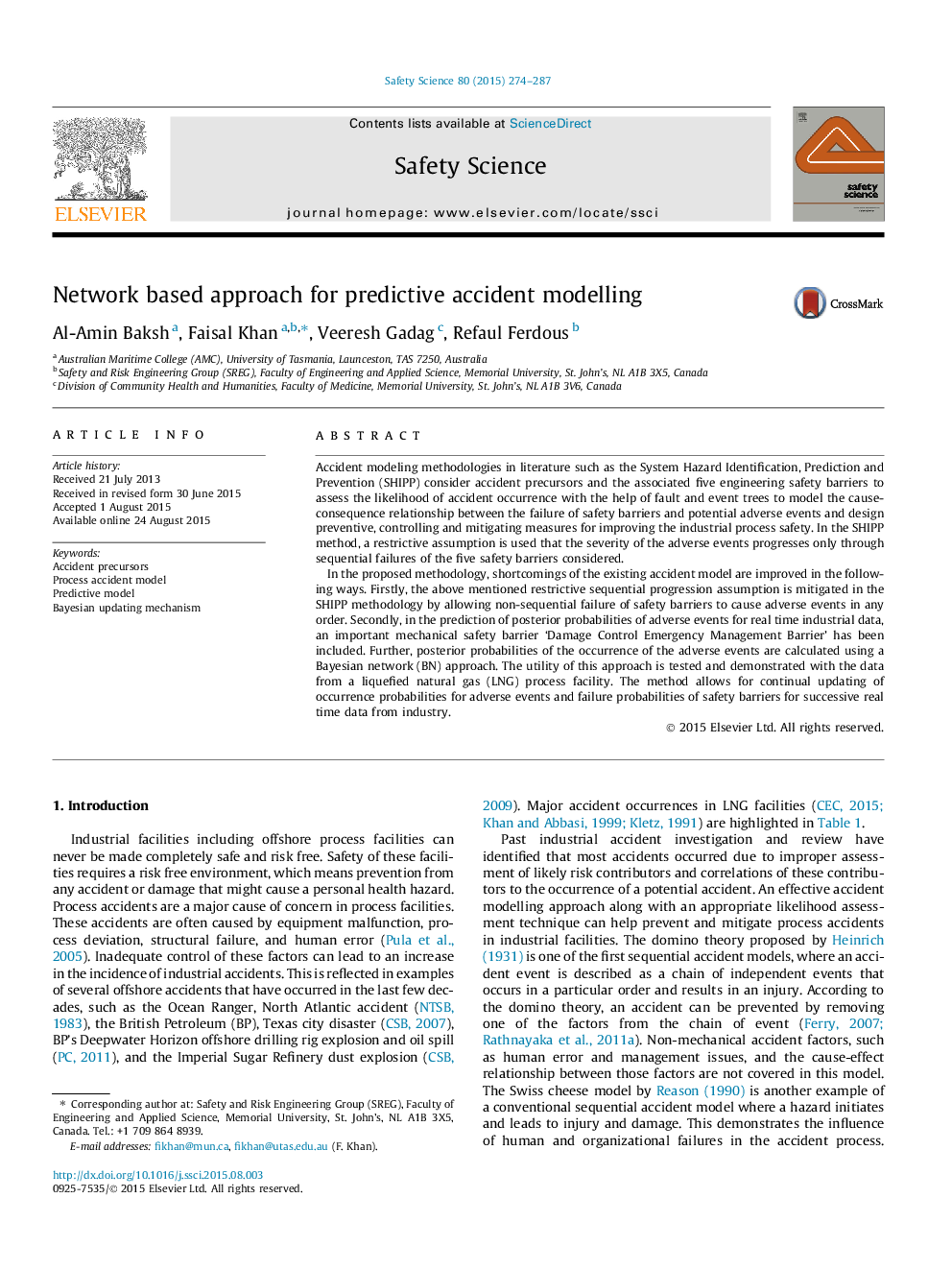| Article ID | Journal | Published Year | Pages | File Type |
|---|---|---|---|---|
| 589004 | Safety Science | 2015 | 14 Pages |
Abstract
In the proposed methodology, shortcomings of the existing accident model are improved in the following ways. Firstly, the above mentioned restrictive sequential progression assumption is mitigated in the SHIPP methodology by allowing non-sequential failure of safety barriers to cause adverse events in any order. Secondly, in the prediction of posterior probabilities of adverse events for real time industrial data, an important mechanical safety barrier 'Damage Control Emergency Management Barrier' has been included. Further, posterior probabilities of the occurrence of the adverse events are calculated using a Bayesian network (BN) approach. The utility of this approach is tested and demonstrated with the data from a liquefied natural gas (LNG) process facility. The method allows for continual updating of occurrence probabilities for adverse events and failure probabilities of safety barriers for successive real time data from industry.
Keywords
Related Topics
Physical Sciences and Engineering
Chemical Engineering
Chemical Health and Safety
Authors
Al-Amin Baksh, Faisal Khan, Veeresh Gadag, Refaul Ferdous,
